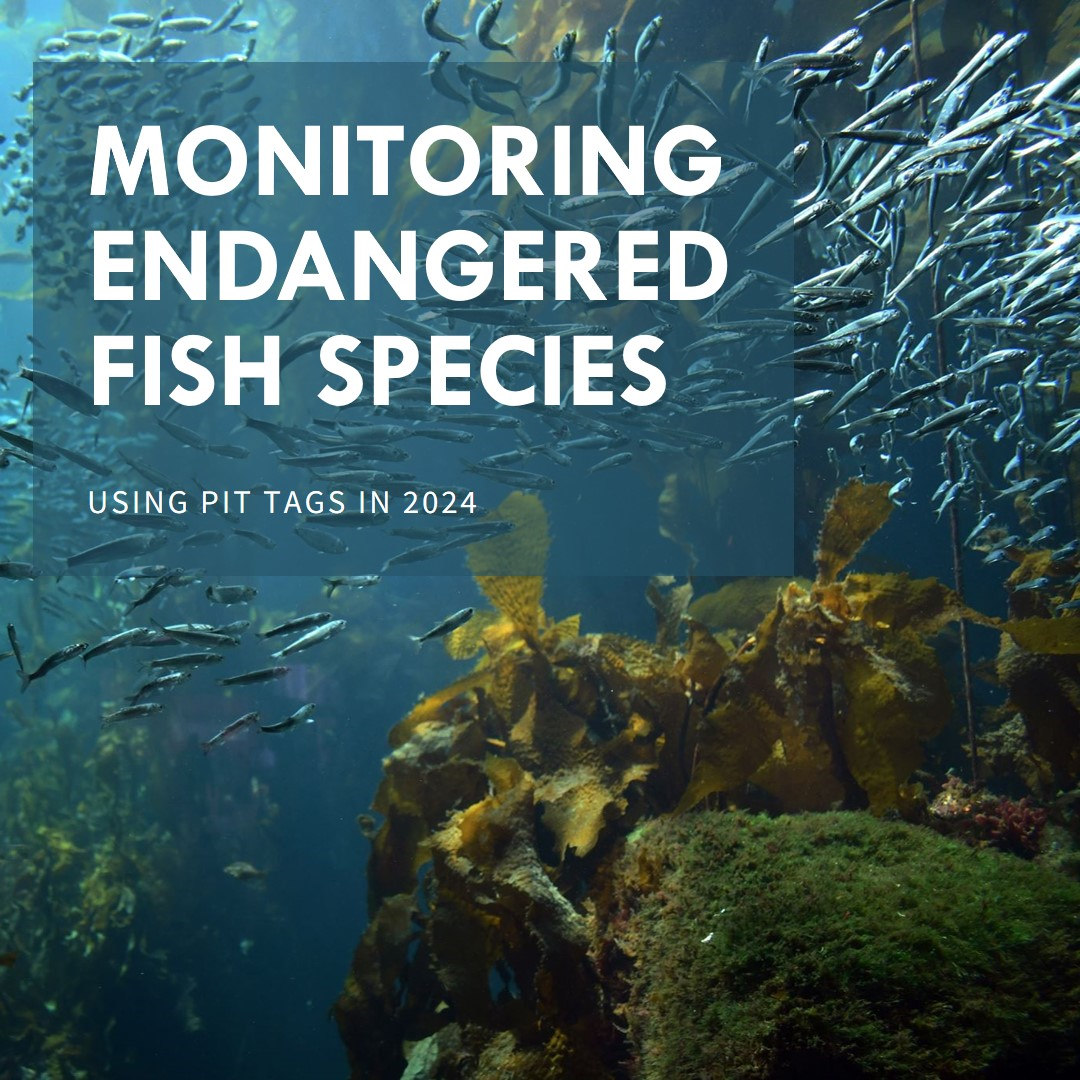In 2024, the importance of conservation efforts for endangered fish species is more critical than ever. Overfishing, habitat destruction, and climate change continue to threaten many fish populations worldwide. To effectively conserve and manage these species, scientists need precise data on fish behaviors, migration patterns, and survival rates. Enter Passive Integrated Transponder (PIT) tagging, a widely used method that enables researchers to track individual fish with remarkable accuracy. But just how accurate are Pit tagging in monitoring endangered fish species in 2024? Let’s dive into the details of how these tags function, their accuracy, and their impact on conservation.
What Are PIT Tags?
PIT tags are small, biocompatible microchips inserted into the fish to give them a unique identification code. Unlike other tracking methods, PIT tags do not require a battery, which means they have an incredibly long lifespan, often outlasting the life expectancy of the fish. These tags are read using specialized readers when the fish pass by detection points, usually set up in rivers or streams. The tag sends a signal with its unique code, allowing researchers to identify the fish without physically capturing it again.
The use of PIT tagging is popular in both freshwater and marine environments, and its precision makes it one of the go-to methods for fish conservation.
How PIT Tags Work in 2024
PIT tags have become more sophisticated over the years. In 2024, advancements in microchip technology have led to the development of smaller, lighter tags that can be applied to a wider range of fish species, including smaller or juvenile fish that were once difficult to tag. Modern PIT tags are highly durable and can withstand extreme environmental conditions, making them suitable for use in both freshwater and saltwater environments.
The detection systems have also evolved, with more robust readers capable of reading tags at a greater distance, even in challenging environments. Companies like Voda IQ, a leader in fish tagging technology, have pushed the boundaries of what’s possible with PIT tags. They offer highly sensitive readers that can be used in remote locations and harsh marine environments, making the monitoring of endangered species more effective.
How Accurate Are PIT Tags?
The accuracy of PIT tags largely depends on two key factors: the quality of the tag itself and the placement of the detection points. In 2024, PIT tagging has reached new heights in precision thanks to improvements in both these areas.
1. Tag Reliability and Durability
PIT tags are incredibly durable, with many able to function for the lifetime of the fish without failure. According to recent studies, the failure rate of PIT tags is minimal, often below 1%. The biocompatible materials used to construct these tags reduce the risk of rejection by the fish’s body, ensuring they remain functional and readable for years. Furthermore, the unique identification code stored in the chip is almost 100% accurate, making misidentification extremely unlikely.
2. Detection Systems
The placement and efficiency of detection systems are critical to the overall accuracy of PIT tags in monitoring fish species. Detection points are strategically placed in key locations, such as river mouths, spawning grounds, and migratory routes. Advanced detection systems in 2024, such as those provided by Voda IQ, offer better read ranges and can detect multiple tags simultaneously, reducing data loss due to missed detections.
Modern systems can now monitor thousands of fish in real-time, providing scientists with vast amounts of data on population dynamics, movement patterns, and habitat use. The ability to gather accurate data without having to recapture fish not only minimizes stress on the animals but also increases the reliability of the information.
3. Environmental Factors
While PIT tags are highly accurate, certain environmental factors can influence detection rates. For example, high water turbidity, strong currents, and obstacles like large rocks or human-made structures can occasionally interfere with signal transmission. However, innovations in 2024 have significantly mitigated these issues. Current detection systems can now operate efficiently in murky waters or areas with heavy debris, further enhancing the overall accuracy of the system.
Benefits of PIT Tags in Endangered Species Monitoring
PIT tags offer numerous benefits when it comes to tracking and conserving endangered fish species. Here are some of the key advantages:
1. Minimal Impact on Fish
Unlike external tags, PIT tags are implanted under the skin or in the body cavity, which means they do not affect the fish’s natural movement. Since they are internal, there’s little chance of them being lost or removed, ensuring long-term tracking accuracy.
2. No Need for Recapture
One of the biggest advantages of PIT tagging is that it eliminates the need to recapture fish to gather data. This reduces stress on the fish and allows researchers to collect information with minimal disruption to their habitat.
3. Long-Term Monitoring
Because PIT tags do not require a power source, they can remain operational for the lifespan of the fish. This allows for long-term monitoring of fish populations, migration routes, and behaviors, providing researchers with valuable data over extended periods.
4. Cost-Effective
While PIT tags and detection systems require an initial investment, they are more cost-effective in the long run compared to other tracking methods. The ability to gather data without repeatedly capturing fish lowers operational costs and reduces the need for manual labor.
Challenges in PIT Tagging
Despite their many advantages, PIT tags are not without challenges. Smaller fish species may still be difficult to tag, although advances in 2024 have made significant strides in reducing this limitation. Additionally, in extremely deep or open water environments, detection systems may need to be more robust to ensure consistent tracking.
Furthermore, PIT tagging requires the installation and maintenance of detection stations, which can be logistically challenging in remote areas. In such cases, mobile detection systems or temporary setups might be necessary to fill data gaps.
The Role of PIT Tags in Conservation
PIT tagging plays a pivotal role in the conservation of endangered fish species. By providing accurate, long-term data on fish movements and behaviors, PIT tags enable scientists to make informed decisions about habitat protection, fishing regulations, and population management.
For example, PIT tagging data has been instrumental in understanding the migration patterns of endangered salmon species. This information has led to the establishment of critical protected areas and the implementation of policies that aim to reduce bycatch and habitat destruction. In 2024, PIT tags continue to be an invaluable tool for conservationists seeking to protect vulnerable fish populations.
FAQs
1) What is the lifespan of a PIT tag?
PIT tags do not have a battery and can last for the entire lifespan of the fish, which makes them ideal for long-term studies.
2) Do PIT tags harm the fish?
No, PIT tags are made of biocompatible materials and are inserted in a way that causes minimal stress to the fish.
3) Can PIT tags track fish in the ocean?
Yes, PIT tags can be used in marine environments, although detection systems must be carefully placed to ensure accuracy.
4) How far can a PIT tag be read?
The read range depends on the detection system, but modern readers can detect PIT tags at distances of several meters, even in challenging environments.
5) Are there alternatives to PIT tags?
While other methods like acoustic or satellite tags exist, PIT tags are often preferred for their durability, cost-effectiveness, and long-term reliability.
Conclusion
PIT tags have proven to be a highly accurate and reliable method for monitoring endangered fish species in 2024. With advancements in tag technology, detection systems, and environmental resilience, PIT tags are helping researchers gather critical data on fish populations without disrupting their natural behaviors. Companies like Voda IQ are at the forefront of this technology, providing the tools necessary to track and conserve endangered species effectively.
As we move forward, the use of PIT tags will likely expand, offering even greater insights into the lives of endangered fish and ensuring that conservation efforts are both data-driven and successful.
Ready to learn more about how PIT tagging can help conservation efforts globally?
Also know about










